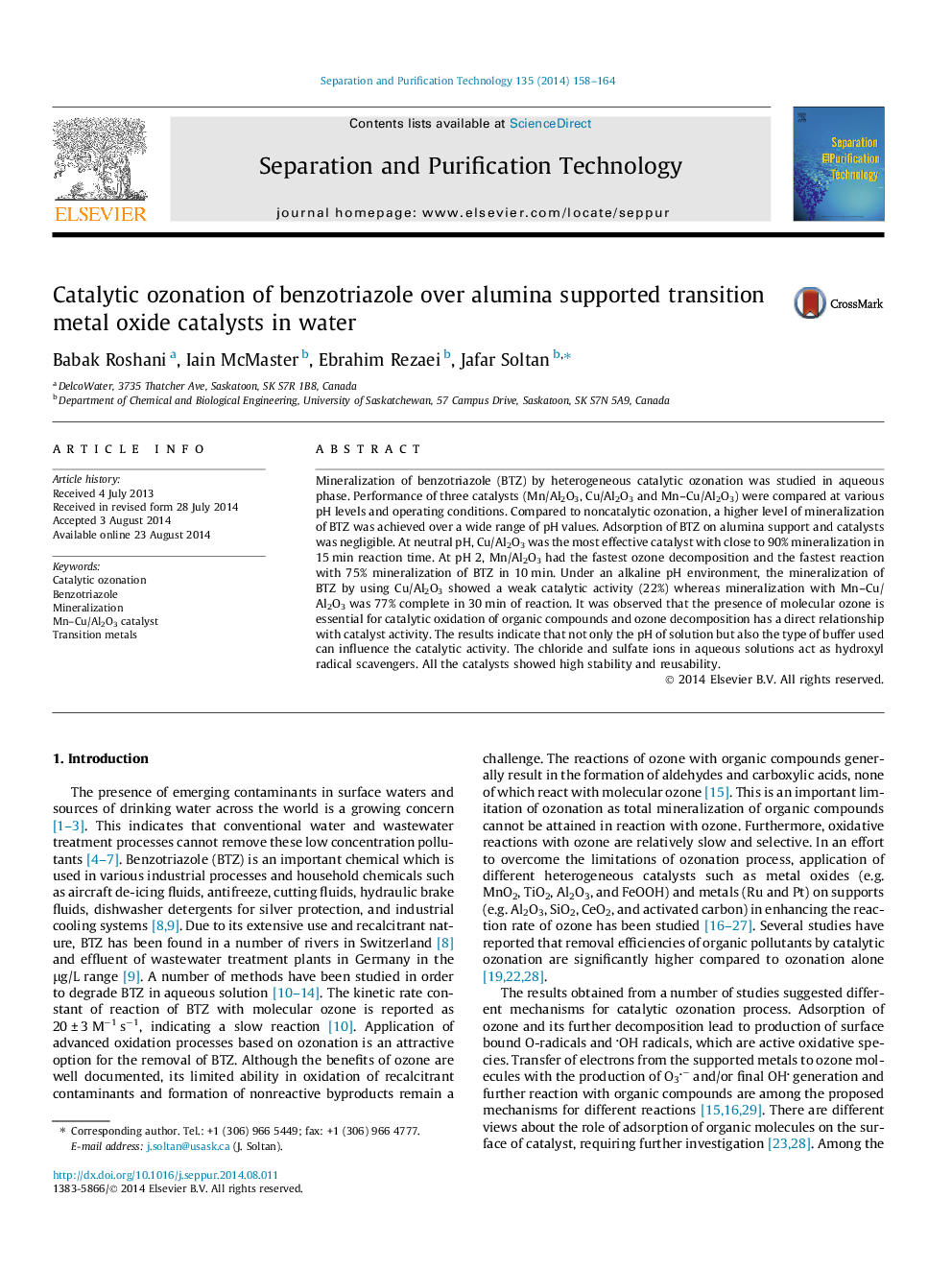| Article ID | Journal | Published Year | Pages | File Type |
|---|---|---|---|---|
| 641090 | Separation and Purification Technology | 2014 | 7 Pages |
•Mineralization of benzotriazole is enhanced by catalytic ozonation in water.•Solution pH strongly affects catalytic activity, initiating OH radical formation.•At neutral pH, Cu/Al2O3 is the most effective catalyst with close to 90% mineralization.•Catalysts are stable and reusable for extended processes and reactions.•Presence of anions in the reaction system impacts the extent of mineralization.
Mineralization of benzotriazole (BTZ) by heterogeneous catalytic ozonation was studied in aqueous phase. Performance of three catalysts (Mn/Al2O3, Cu/Al2O3 and Mn–Cu/Al2O3) were compared at various pH levels and operating conditions. Compared to noncatalytic ozonation, a higher level of mineralization of BTZ was achieved over a wide range of pH values. Adsorption of BTZ on alumina support and catalysts was negligible. At neutral pH, Cu/Al2O3 was the most effective catalyst with close to 90% mineralization in 15 min reaction time. At pH 2, Mn/Al2O3 had the fastest ozone decomposition and the fastest reaction with 75% mineralization of BTZ in 10 min. Under an alkaline pH environment, the mineralization of BTZ by using Cu/Al2O3 showed a weak catalytic activity (22%) whereas mineralization with Mn–Cu/Al2O3 was 77% complete in 30 min of reaction. It was observed that the presence of molecular ozone is essential for catalytic oxidation of organic compounds and ozone decomposition has a direct relationship with catalyst activity. The results indicate that not only the pH of solution but also the type of buffer used can influence the catalytic activity. The chloride and sulfate ions in aqueous solutions act as hydroxyl radical scavengers. All the catalysts showed high stability and reusability.
